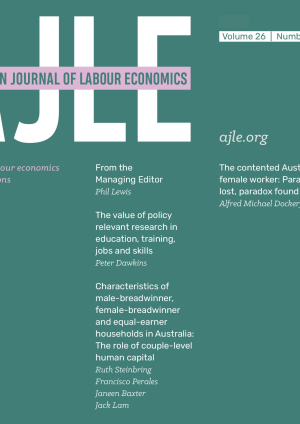The contented Australian female worker: Paradox lost, paradox found
In a seminal 1997 paper, Andrew Clark observed that British women report higher job satisfaction than their male counterparts, despite generally holding inferior jobs. To become known as the ‘paradox of the contented female worker’, Clark argued this was due to women having lower expectations, and that the phenomenon would disappear as women’s positions in the labour market improved, a prediction supported by later evidence.
This paper draws on data from the Household, Income and Labour Dynamics in Australia survey to investigate how the differential in women’s job satisfaction relative to men’s evolved in Australia between 2001 and 2022.
Regression models suggest that a substantial job satisfaction premium for women gradually diminished over the first decade of this century.
Unlike in Britain, however, it re-emerged and remained relatively constant from around 2013.
Oaxaca-Blinder decompositions show the job satisfaction premium for women is primarily attributable to differences in the effects of variables, rather than differences in the mean characteristics of male and female workers or of their jobs.
Changes in preferences relating to working hours and the effects of educational attainment on job satisfaction have particularly shaped the evolution of differences in job satisfaction by gender.
Despite a convergence in the raw means of men’s and women’s job satisfaction assessments in recent years, the paradox of the contented female worker appears to be alive and well in the Australian labour market.




